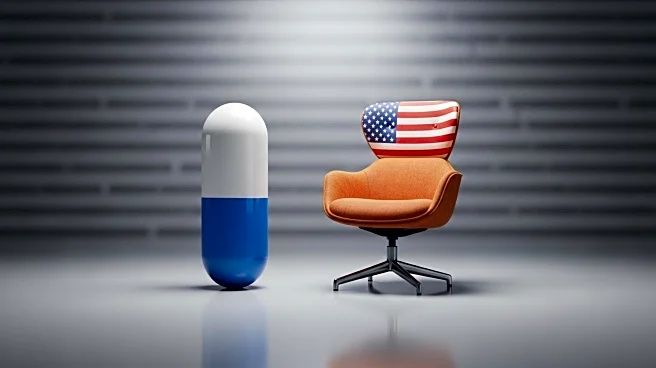What's Happening?
President Trump has announced a series of new tariffs set to take effect on October 1, 2025, targeting various imported goods including pharmaceuticals, furniture, and heavy trucks. The tariffs include a 100% tax on branded, patented drugs entering the U.S., with exemptions for companies that establish manufacturing plants domestically. Additionally, a 30% tariff will be imposed on upholstered furniture, and a 25% tariff on imported heavy trucks. These measures have led to mixed reactions in the stock market, with some pharmaceutical companies seeing gains due to the exemptions, while furniture retailers and semiconductor companies experienced declines.
Why It's Important?
The introduction of these tariffs could have significant implications for the U.S. economy and consumers. The pharmaceutical industry, in particular, may face increased costs, potentially leading to higher drug prices and shortages. This could impact healthcare affordability and access. The furniture and heavy truck industries may also see price increases, affecting consumer spending and business operations. The tariffs are part of President Trump's broader trade strategy, which has previously used import taxes as a negotiation tool with foreign nations. The economic impact could extend to inflation and growth, complicating monetary policy decisions by the Federal Reserve.
What's Next?
As the tariffs are set to take effect soon, businesses and consumers are likely to adjust their strategies. Companies may seek to absorb costs or pass them on to consumers, while some may accelerate imports to avoid higher tariffs. The Federal Reserve will need to consider these developments in its upcoming policy decisions, particularly as it navigates potential stagflation risks. Stakeholders in affected industries may lobby for adjustments or revocations of the tariffs, depending on their impact on trade negotiations and domestic economic conditions.











